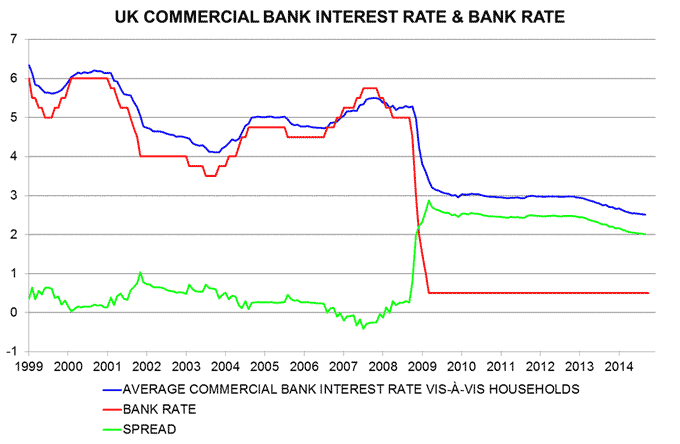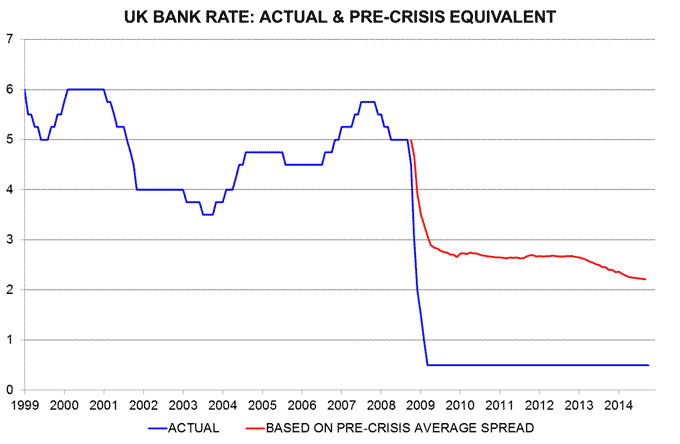Why UK monetary policy is still loosening
UK Bank rate has remained extraordinarily low for more than five years for two fundamental reasons. First, sustained loose monetary policy has been needed to offset various drags on economic growth. Secondly, the spread between commercial bank interest rates and Bank rate has been much wider than in the past, requiring the latter to be set much lower to achieve a given policy stance.
The second reason is usually ignored in policy discussions but is as important as the first for assessing whether a change is needed. As banks return to financial health, the spread between their interest rates and Bank rate is falling. By keeping Bank rate unchanged, the MPC has acceded to an effective further loosening of monetary policy.
The first chart compares the average commercial bank interest rate vis-à-vis households* with Bank rate. This average rate has fallen by 0.4 percentage points since end-2012. It is reasonable to argue that the policy stance was sufficiently loose at end-2012, since economic growth in 2013-14 has been strongly above trend. On this view, the MPC should have raised Bank rate to keep the average commercial bank rate stable and avoid unwarranted further stimulus.
The second chart makes the same point in a different way. The red line shows a “pre-crisis equivalent” Bank rate – an estimate of the level that would have been required before 2009 to produce the observed commercial bank interest rate, based on the pre-crisis average spread. This equivalent rate was stable at 2.6-2.7% over 2010-12 but has since fallen to 2.2%. The MPC, arguably, should have raised Bank rate to prevent this decline.
Put aside the discussion about whether it is time to begin scaling back monetary stimulus. The relevant question for the MPC’s doves is why they believe the policy stance now should be even looser than at end-2012.
*Average of lending and deposit rates, calculated from Bank of England interest rate and volume data for different types of business.



Reader Comments